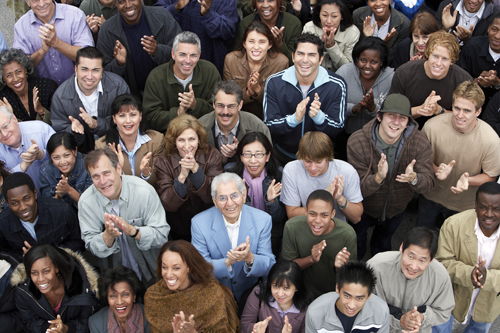When I was a teen growing up outside New York City, my mom was a big country and western fan. I remember the collective groans from my brother, Bret, and me as she ferried us and our friends to after-school activities to the honky-tonk sounds of what I heard as hillbilly twang. One of my mom’s favorite songs was about what to do when you face challenges in life. The lyrics were simple: “There ain’t no easy horses but you gotta learn to ride.” Mom reminded us of that often.
Many years later, Bret and I were living in New York City on 9/11. Afterward, our parents begged us to move to the suburbs, where they hoped we’d be out of danger. For Bret and me, leaving Manhattan was not an option; it was our home. Weeks of tense family discussions ensued. My parents lobbied for safety and against the new terrorist threat. Bret and I held firm in our refusal to be chased out of the city we loved.
We are all individual in our response to trauma, and we are all unique in our recovery process. In the middle, however, we meet within the confines of our community’s well-defined culture. In this space we can create significant experiences that allow every type of individual to find ways to release the present pain while also beginning the process of connecting to a new future.[/pullquote]From 9/11 to Malaysia Airlines 370 to the Chilean earthquake and Washington mudslide to the Fort Hood murders (both times), the news of a community rocked by tragedy continually reminds us of our collective vulnerability. Who are we as individuals after these calamities? Who are we as a community when the boundaries of civility, safety, and certainty shatter? The aftermath of such traumas and the answers to these questions offer us opportunities to engage in, explore, and expand both our independent and our collective strength, including opportunities to:
1. Recognize differences. Not everyone responds to tragedy in the same way. Individual responses to trauma generally divide by gender: Men gravitate toward isolation; women engage in what researchers call “tend and befriend”—that is, women like to gather and connect versus the male tendency to retreat to a private space. Offering community options that support both needs encourages everyone to engage in his or her own natural process.
2. Look back. For some, the first step in moving through trauma is to glance behind: to note, study, and catalog what has occurred. Activities that encourage discussion, fact finding, story building, and investigation offer ways for community members to work together on tasks that can help make meaning out of a tragedy.
3. Focus forward. Others rebound by assessing what to do now and later. Resilience, hope, and release come from making choices and taking actions that bring change and reduce fear. Inviting individuals to participate in activities, functions, and programs that project ahead not only helps them process trauma but strengthens the rebirth of the community as a whole.
4. Promote education. A study conducted after 9/11 revealed that those who were given 30 minutes of trauma training (defining trauma, its effects, and likely post-trauma symptoms) were far more successful at being resilient and steering clear of symptoms than those who received no training or were given counseling only. Trauma training can activate individual resilience that becomes shared and extended through community connection.
5. Honor what’s been lost. At the heart of grief is the pain of losing someone or something we love. Whether that loss is physical, emotional, or philosophical, it deserves its time center stage—not solely for the somber moments but for the life-affirming ones as well. The idea is to create an event or experience designed not to place specific attention on the loss but to feature the aspect of love instead. One way to facilitate the letting-go process is through the creation of an uplifting public ritual that celebrates love—an event such as a concert, for example, that focuses on how the love lives on.
6. Define a healing intention. Moving through a traumatic event isn’t just about getting through the crisis but about choosing what the final healthy outcome will be. Creating a plan for communal renewal and rebuilding begins with the simplicity of foresight and the construction of a vision: “We want _________ because ___________ so that ____________.” Filling in the blanks with details related to ways in which the past will be processed, the present will be dealt with, and the future will be created activates creativity, flexibility, and collective energy that can be channeled into healing actions.
7. Deliberately create a post-trauma identity. Communities define themselves by their collective expression, which can change dramatically after a trauma. Opening healthy discussions about how the community wants to be known, perceived, and remembered in relation to a traumatic time encourages decisions that shape policies and procedures to develop strategies for entire communities to find direction, buoyancy, and familiarity.
Strengthening cultural bonds can dramatically affect the direction of recovery. In the aftermath of the Haitian earthquake in 2010, many well-meaning mental health practitioners from the United States converged on the country to help survivors process the trauma. Due to cultural differences, however, their methods were useless. Haitians preferred dancing, singing, and comfort from their ministers rather than the evidence-based methods the American practitioners tried to introduce.
We are all individual in our response to trauma, and we are all unique in our recovery process. In the middle, however, we meet within the confines of our community’s well-defined culture. In this space we can create significant experiences that allow every type of individual to find ways to release the present pain while also beginning the process of connecting to a new future.
“You gotta learn to ride.”




1 Comment
新品入荷最安値 トリugg
I 愛あなたのブログ..とても素敵な色&テーマです。このウェブサイト自身や誰かがあなたのためにそれを行うために雇ったのはでしたか? Plzを応答私はしているよように自分のブログを知っていると知りたいuはからこれを得た場所。 ありがとう